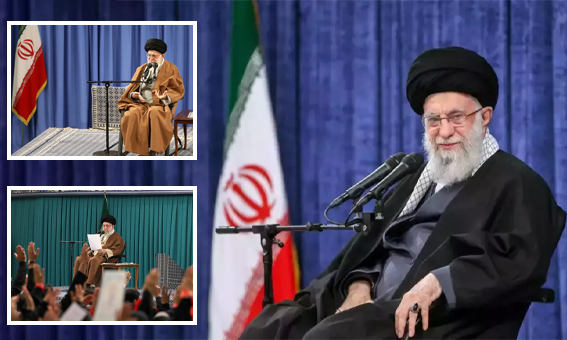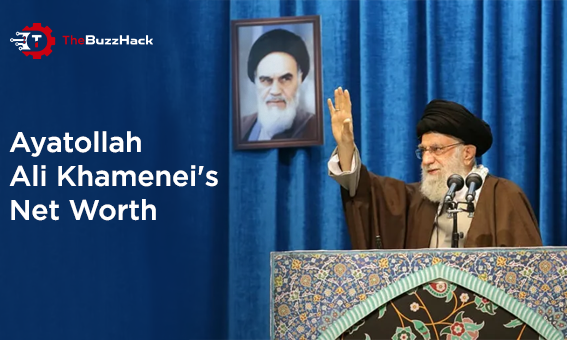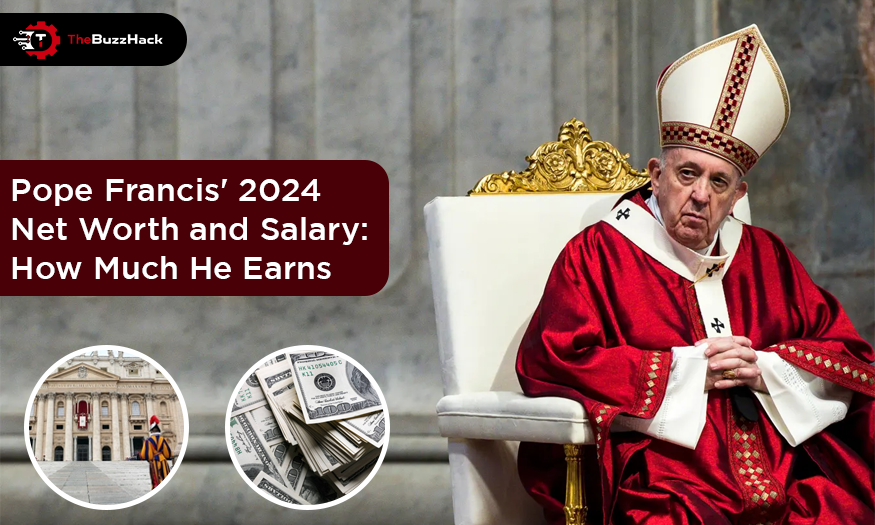Ayatollah Ali Khamenei, the Supreme Leader of Iran, is widely considered one of the most influential figures in the Middle East. While his global political authority is well-known, much speculation surrounds the size of his personal fortune. In this blog, we will explore Ayatollah Ali Khamenei’s net worth, investigating the sources of his financial standing and how his wealth influences his powerful position in Iran.
Background of Ayatollah Ali Khamenei
Ayatollah Ali Khamenei was born on 17th July 1939 in the Iranian city of Mashhad. He has held the position of Supreme Leader of Iran since 1989 after the passing away of Ayatollah Ruhollah Khomeini. In terms of his status as the top political and spiritual leader in the country, he has been able to exert severe control over the nation’s policies, military forces, and economic activities. Owing to the Supreme Leader position which is the key powerful place in the country, there has been clear estimation of the total presumed Ayatollah Ali Khamenei’s Net Worth.
The Speculation Surrounding Ayatollah Ali Khamenei’s Net Worth

Ayatollah Ali Khamenei’s Net Worth that has raised eyebrows even outside the state. This is because, since no official confirmations of his wealth legally exist, many reports and inquiries tend to suggest that Khamenei controls a financial network estimated to be in the billions. This conjecture is explicable to a large extent by the organizations and institutions that are under his supervision, some of which are thought to be earning staggering amounts of money.
How Khamenei’s Wealth is Accumulated
The group called Setad, also known as The Execution of Imam Khomeini’s Command, has often been classified as one of the instigators of the Supreme Leader’s affluence. It was formally established in the latter part of the 1980s to administer properties and resources seized after the Iranian Revolution of 1979. As time has passed, Setad has extended its reach, amassing large areas of land, shares in companies and other property throughout Iran.
Through Setad, billions of dollars have reportedly been amassed, with some reports estimating its value to be over $95 billion. While it is officially stated that Setad is used for charitable purposes, critics and international watchdogs have raised concerns about its opaque financial dealings.
Other Sources of Wealth Apart from Setad, Ayatollah Ali Khamenei’s Net Worth is believed to come from various other state-controlled industries, foundations, and financial institutions in Iran. The Bonyads, charitable trusts that control large parts of Iran’s economy, are also under the indirect supervision of the Supreme Leader. These entities often operate with minimal transparency, making it challenging to ascertain their actual financial worth.
Additionally, Ayatollah Khamenei’s influence over military industries and sectors like oil, gas, and telecommunications could have contributed to his financial standing. These industries, being vital to the Iranian economy, are closely tied to the leadership, further feeding into the speculated wealth of the Supreme Leader.
The Impact of Ayatollah Ali Khamenei’s Net Worth on His Leadership
Ayatollah Ali Khamenei is the head of one of the most powerful institutions in Iran, thanks to the assets that he holds personally, or through his subordinated organizations. Such command over strategic economic resources has helped Khamenei to retain a firm grip on politics in Iran. Now, the economics that comes from that wealth is not confined to the boundaries of Iran only, as Iran is a center of Western geopolitics concerning the Middle East.
Imam Khamenei, the Leader of the Islamic Revolution, met with the members of the Iranian delegations who took part in the 2024 Paris Olympic and Paralympic Games on Tuesday, Sept. 17, 2024. pic.twitter.com/TBxiXjNNSX
— Khamenei.ir (@khamenei_ir) September 17, 2024
Thanks to such wealth, Khamenei has also provided financial means for the Islamic Revolutionary Guard Corps (IRGC) – a political and military formation that holds considerable power in Iran politically and economically. All activities of Khamenei, whether in Iran or outside, have served to cement Khamenei’s position at the presidency.
International Criticism and Sanctions
A close examination of the internal dynamics of the system of power in our country is complemented by an analysis of the role of such figures as Ayatollah Khamenei in international politics. Therefore, in the past few years, countries like the United States have taken measures to prevent, so to say, ‘sequester’ assets that have been attributed to Khamenei or his associates. Specifically, the U.S. government has put sanctions against Setad stating it is mainly used to fund the rulers of Iran whilst attempting to escape the repercussions of economic sanctions against the country.
Even with these sanctions being imposed against the Islamic Republic of Iran and Khamenei, his wealth and influence have generally persisted and his hold over the country’s leadership has not weakened. The Iranian government has denied many of the allegations surrounding Khamenei’s wealth, emphasizing that his lifestyle is modest.
Public Opinion in Iran
As far as Iran is concerned, the impression about the wealth of Ayatollah Khamenei is rather ambiguous. Some people attribute national heroism to this leader while others point out to the issues of inequality in the country. For instance, Khamenei and Setad institution’s wealth is typically disparate to the income of some Iranians, thus creating anger in certain groups of people.
And despite people wondering how rich he is, Ayatollah Khamenei is still a popular person in some quarters who consider him as a protector against the Western encroachment on the Islamic Republic and its principles.
Why Ayatollah Khamenei Accord More than Money
It should also be noted, however, that the accumulated wealth is only one form of Mr. Ayatollah Khamenei’s power, and that it includes, in addition, much more than merely financial assets. The fact that he is in a position to influence the political, military as well as the religious institutions within Iran makes him one of the powerful leaders within that region.
Equally, his power has an ideological element, in this case the fact that Khamenei has a place in the hierarchy that is considered religious and within this ideologic level helps is one of the longest aims for power in Iran regardless of changes in the economy and world political situation.





